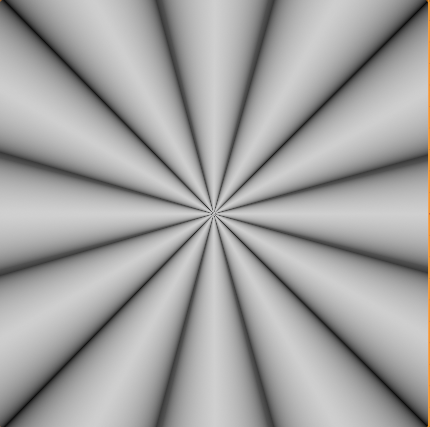Doing this with a color ramp with that many stops looks like a nightmare. Let's instead divide the plane into 24 radial bits along its center:

Atan2 is a special function that gives us the angle of the sample relative to the origin, in radians (minus pi to plus pi), which we can then remap into 24 parts. Why 24? So that we can mirror half of them:

So we take the second half of each 30 degree arc, and invert it.
(Edit: There's an error here that I can't easily fix, which is that I really should be multiplying my values by 2 now, because mirroring it over the center means that I'm only exploring the color range from 0 to 0.5.)
So right now we've got linear color forming a sawtooth wave. It's already continuous, in a sense, but to make it really smooth, we want to turn that sawtooth wave into something smooth:

We could do that with some direct math, but it sounds like you're interested in tuning this to eye, and nothing beats an RGB curve for that. Remember, that curve you're drawing is repeated, back and forth, over 24 sections of the circle, so for us to be smooth, we want the slope to stay the same at the transitions-- that's why this looks smoother than the sawtooth above, because the slope of the curve at the left and right edge is close to horizontal. (Edit: well, it would be better if I multiplied values by 2 first, to explore the full 0,1 range of brightness, as mentioned in the above edit. Otherwise, the slope at output 1 doesn't have much to do with the slope at output 0.5....)








